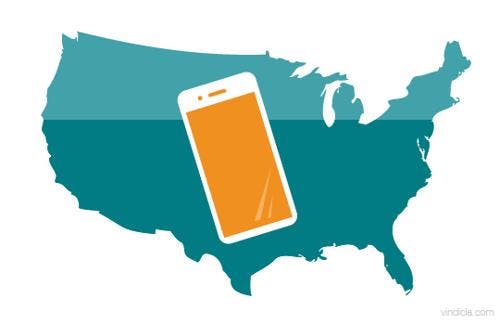Blog
June 25, 2019 | Authored by: Vindicia Team
Why you need a mobile-first attitude as a subscription business
We live in a mobile world. Desktop applications take a back seat to mobile-focused software. More than three-quarters of Americans (77%) own a smartphone, and for many of them, mobile devices are attached to their hips.
Consumers favor accessibility, simplicity, and speed above all else, and mobile delivers that in droves.
For many people, mobile devices are their primary connection to the internet. Two-thirds of consumers consider their smartphones to be the most important device they have to access the internet. And for many, it is their preferred way to access accounts and services.
Conversely, only 15 percent say the same about their PCs or laptops. Even solutions that may appear to inherently favor PCs, laptops, or other platforms need to account for mobile users – whether as a primary channel or a secondary channel for more casual or occasional use.
The tech world has taken notice of this sweeping change in user behavior. From ubiquitous business software like Salesforce, Microsoft Office, and Adobe, which have traditionally been designed for desktop users, to the long tail of thousands of applications and services, pretty much all must now support their own mobile apps.
If you're not embracing a mobile-first attitude with your subscription business, you may not be reaching the widest audience possible. Moreover, you could be creating unnecessary friction with customers who prefer mobile interfaces and using your service while on the go.
Create an end-to-end mobile experience
Every aspect of your subscription business needs to address the mobile user experience, from onboarding and registration to service usage and payments. The interface is extremely important in this regard, as mobile devices operate in a very different fashion from desktops or web-based platforms. Crafting a solution around the inherent strengths and capabilities of mobile interfaces, while working around their shortcomings, will help deliver the best user experience possible.
There are two main schools of thought to consider here: creating a mobile website that has been optimized for smartphone and tablet users or building a native application from scratch. Truthfully both options have their advantages, and you may find that the best way forward is to support a mobile website along with a dedicated application.
Use a responsive website
Today mobile websites have become far more user-friendly thanks to responsive web design. Responsive websites essentially adapt to the user's machine and support a wide variety of screen sizes and shapes. Someone viewing the site on a smartphone will have a more compact interface that scrolls vertically, whereas a PC user will be shown a more horizontal layout that takes advantage of the additional real estate with more on-page features.
Beyond their inherent accessibility, mobile and responsive websites don't require users to update software or install new platform releases to access them. Many businesses find mobile websites preferable for the cost savings alone: development costs are typically much lower than building dedicated software.
Moreover, the need to support Android and iOS devices compels businesses to incur additional expenses to address both user bases, However, mobile website design allows you to support all audiences without investing in separate development projects.
Develop Android and iOS apps
While there are built-in development and maintenance costs associated with mobile applications, these solutions often deliver a better user experience. Apps allow for more customization and can be optimized with touch screen controls in mind, creating a more intuitive interface.
Mobile apps can also serve as a more direct connection to the customer since anyone using the app will be logged into their account. Subscription businesses can send personalized communications, exclusive promotions, and account updates through the app itself. Push notifications alert customers to any new service developments they should be aware of, so you don't need to worry about your messages getting lost in the mail or sitting ignored in the customer's inbox.
To be sure, you can send communications to mobile website users, but not with the same immediacy or directness that application push notifications offer.
"The best course of action is to build both a dedicated application and a mobile website."
Mobile apps can often provide more opportunities to personalize the customer experience as well, using real-time data like user location and in-app activity to tailor recommendations, promotions, and other offerings to a customer's specific circumstances.
They also tend to reduce customer friction with their streamlined interface and navigation. And users simply love apps. Native mobile apps are designed with specific platforms and devices in mind, so customers receive a consistent user experience. A mobile website – at least one that has not adhered to the principles of responsive design – may not display correctly on devices, significantly impacting the user experience.
And because mobile apps typically store data locally on users' devices, they are able to free up resources to maximize performance and responsiveness.
Depending on the product or business model, there may be some cases where you do not require both a website and an app. However, in most instances, the best course of action is to build both a dedicated application and a mobile website to reach the widest audience and support every customer preference.

Build an optimal, seamless mobile platform
Resist the temptation to take an existing desktop application and rework it into a mobile solution. Trying to adapt PC software to a mobile platform is a recipe for disaster. Poor controls and navigation, on-screen text that's often difficult to read and backend issues can negatively impact app usability.
If your subscription business ultimately decides to support both a mobile website and application (or two applications for iOS and Android audiences), those platforms need to be correlated and connected on the back-end so all data and account information is shared between them. While a user may prefer to access their account through the mobile app, that won't necessarily be their only touchpoint. They may want to log into their account through their laptop or PC from time to time, and they need to be able to see any account updates regardless of which device or platform they use.
Creating a single, seamless user experience that incorporates different formats in this fashion is essential to reducing customer friction and improving usability. It also helps support ongoing personalization trends, providing users with all of their account and profile details as they move from platform to platform.
Lean on mobile design experts
If you haven't already begun taking steps to create a mobile app or mobile-optimized website, you need to start doing so. The tide has turned in favor of mobile, and it will continue to be the dominant consumer and business platform until the next big innovation.
Whether you need to build a mobile app from scratch, design a mobile website or incorporate mobile-focused features into an existing solution, the support of a mobile design expert is invaluable. The stakes are high, and a business partner with experience and skills in this area can make any mobile development project a success.
As the subscription people, Vindicia has helped numerous organizations craft subscription billing solutions that support multiple user platforms and seamlessly tie together mobile payments with other payment options. Don't wait any longer to design the ideal mobile platform for your subscription-based service.
About Author

Vindicia Team
We value our subject matter experts and the insights each of them brings to the table. We want to encourage more thought leaders to come together and share their industry knowledge through our blog. Think you have something interesting to contribute as a guest blogger? Contact us at info@vindicia.com